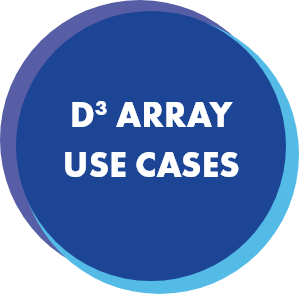PathogenDx’s D3 Array is a new approach to multiplexed molecular testing.
The Dynamic Dimensional Detection technology is built upon PathogenDx’s proprietary design of a flexible, solution-facing open architecture, rich with multiple highly accessible probe binding sites. The amplicon target can move easily through the structure, locate probes, and bind with greatly reduced steric hindrance. Consequently, the hybridization reaction becomes more rapid, and can occur at room temperature, thus yielding an increase in affinity while retaining the ability to detect single nucleotide sequence changes (SNP’s).








